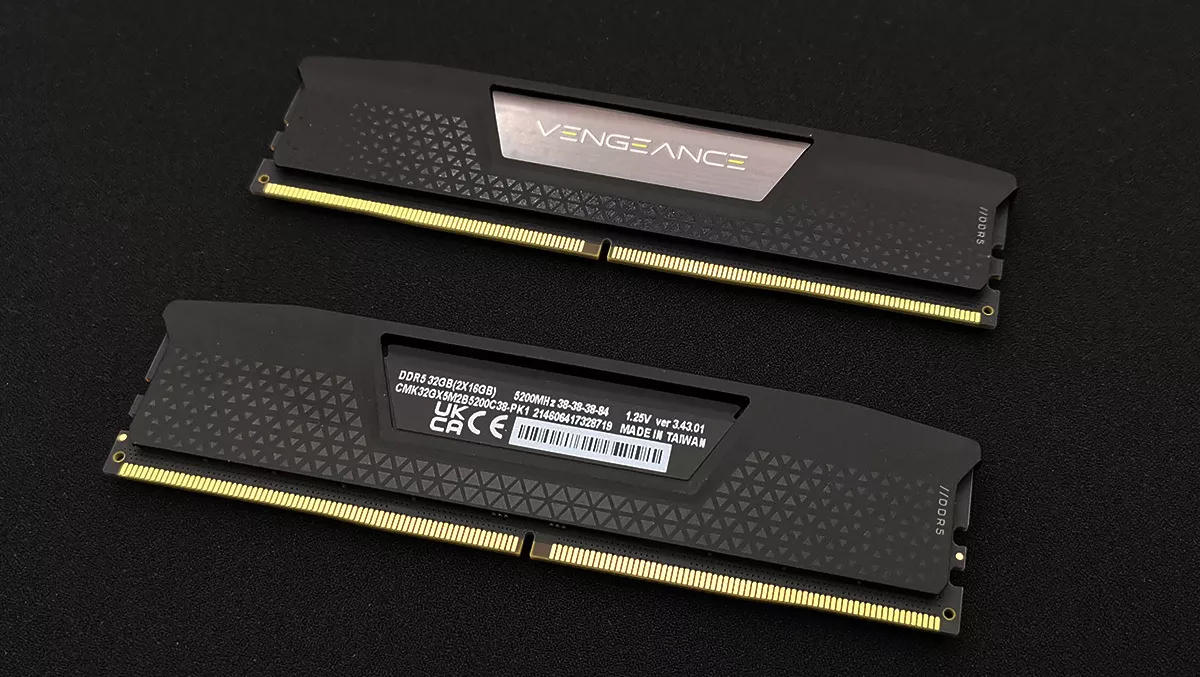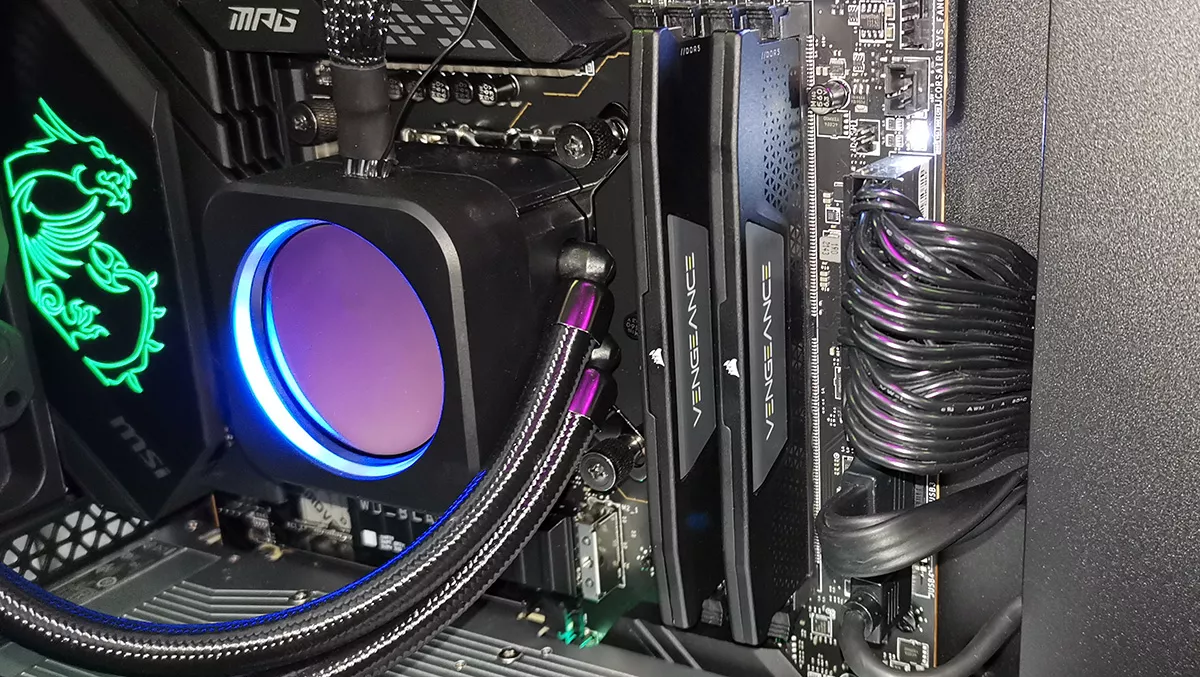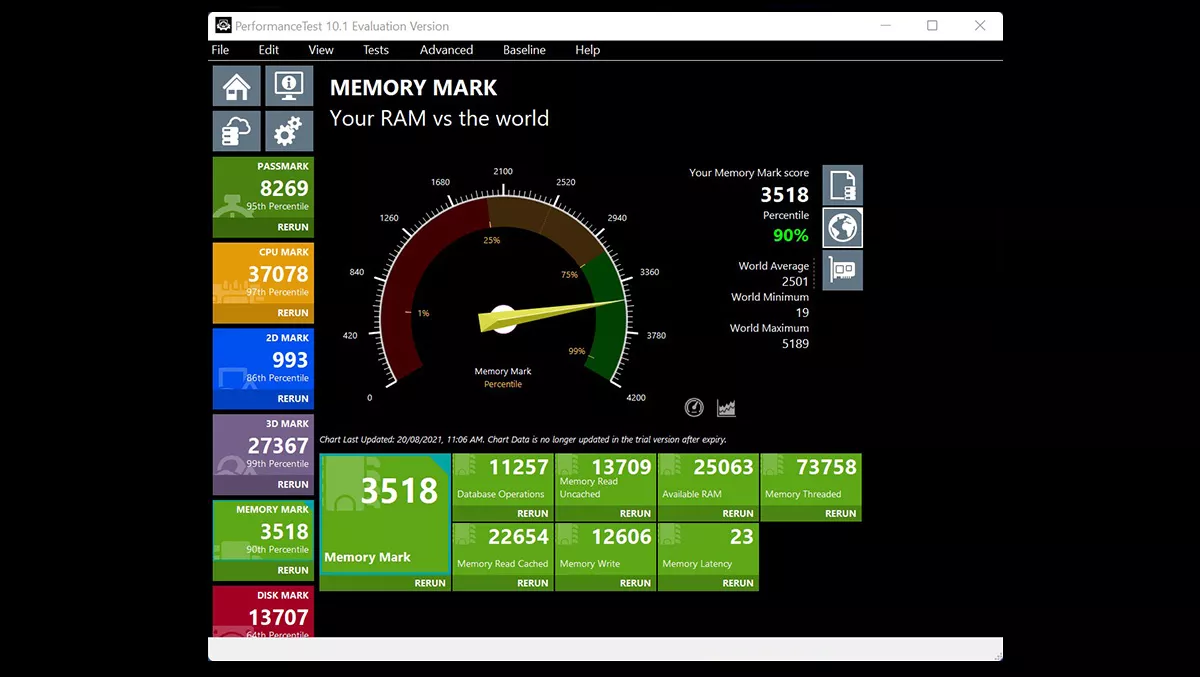
Hands-on review: Corsair 32GB Vengeance 5200MHz DDR5 DRAM kit
With Intel's 12th-generation Alder Lake CPUs and AMD's upcoming Ryzen 7000 CPUs both supporting DDR5, soon users will need to make the jump to the new desktop memory standard. But right now, at least with Intel's Z690 chipset, which can support motherboards configured for DDR4 or DDR5 (but not both), it's still a matter of personal choice.
If you are buying a new PC or upgrading your existing machine with one of Intel's Alder Lake CPUs, whether or not to go down the DDR5 route now is a decision that you will need to make. Late last year, when the Intel 12th generation CPUs were released, the decision was, pretty much, made for you. DDR5 modules were in short supply and quite expensive, making cheaper DDR4 kits and a compatible Z690 motherboard quite appealing.
Corsair's Vengeance 5200MHz DDR5 DRAM offers PC users an entry-level upgrade to the new memory standard allowing them to get a little bit more out of their new Alder Lake CPUs. We were sent a 32GB Vengeance DDR5 kit consisting of two 16GB modules, each labelled 5200MHz 38-38-38-84 1.25V.

At this point, 32GB is the optimal amount of memory that you should be considering. Any less and you could start running into problems with modern games, in the future, and certainly some creative applications. 64GB of RAM is probably excessive, for the moment anyway. Also, just installing one 16GB module will only be running in single-channel mode as opposed to dual-channel with two modules. Theoretically this also increases available memory bandwidth, but may not have any significant impact on application performance.
More importantly, always buy the amount of memory that you think you are going to need. Even today, you can't guarantee that adding another 16GB module, even if it is identical to what you already have installed, will work.
The Corsair Vengeance was clipped straight into the MSI Z690 Carbon WIFI motherboard without issue. I then switched the memory to use the XMP 3.0 profile in the UEFI settings. This increased the modules' speed from that of the nominal JEDEC profile to the XMP rated 5200MHz frequency and timings.
I'd already tested some top-of-the-range (and twice as expensive) 6000Mhz DDR5 modules. Comparing the results to the Corsair Vengeance 5200MHz DDR5 yielded some interesting results. For the Performance Test 10.1 Memory Mark, there was only a very slight prop in performance from 3578 points to 3518 points.
The Procyon photo editing benchmark (which uses Adobe Photoshop for real-world results) had the Corsair 5200MHz DRR5 performing tasks only a fraction of a second slower than DDR5 memory costing almost twice as much. The Corsair memory scored quite a lot better than the DDR4-4600 that I benchmarked with the same i9-12900K at the end of last year.
The Procyon video editing test had the Corsair memory performing ever so slightly better than the more expensive DDR5 memory when exporting a 4K file. Crossmark, as well, had the cheaper Corsair memory performing better than the more expensive modules.

The results above suggest that it's probably too early to break the bank with the most expensive DDR5 modules available right now. It's still early days for DDR5 so no one should expect too much of a performance boost over the more mature and optimised DDR4 modules. The advantage of jumping in with a DDR5 motherboard now does mean that you'll have the board ready for a future DDR5 memory upgrade. As the technology matures, DDR5 speeds and performance will soon start to increase well beyond that of DDR4.
It seems that there's not much real-world performance gain between the different DDR5 modules available at the moment. Even though they have high frequencies and cycle faster, they all have high latencies that put them on par with their DDR4 counterparts. Whilst the potential is there, you are only likely to see a marginal performance improvement over DDR4 and perhaps some better energy optimisations (which could make overclocking a bit easier).
If you do want to buy or build an up-to-date 12th-gen Intel PC, with some room for upgrading, a DDR5-compatible Z690 motherboard is the way to go. I'd probably avoid going for expensive DDR5 modules right now. At AUD$399/NZD$499 the 32GB Corsair Vengeance 5200MHz DRAM kit is one of the more affordable DDR5 options available, even offering a slight performance improvement over DDR4.
Corsair's 32GB Vengeance 5200MHz DDR5 kit offers early adopters of DDR5-compatible motherboards a reasonably-priced memory solution. I'd highly recommend this kit until significantly faster DDR5 modules become available in a year or so.


